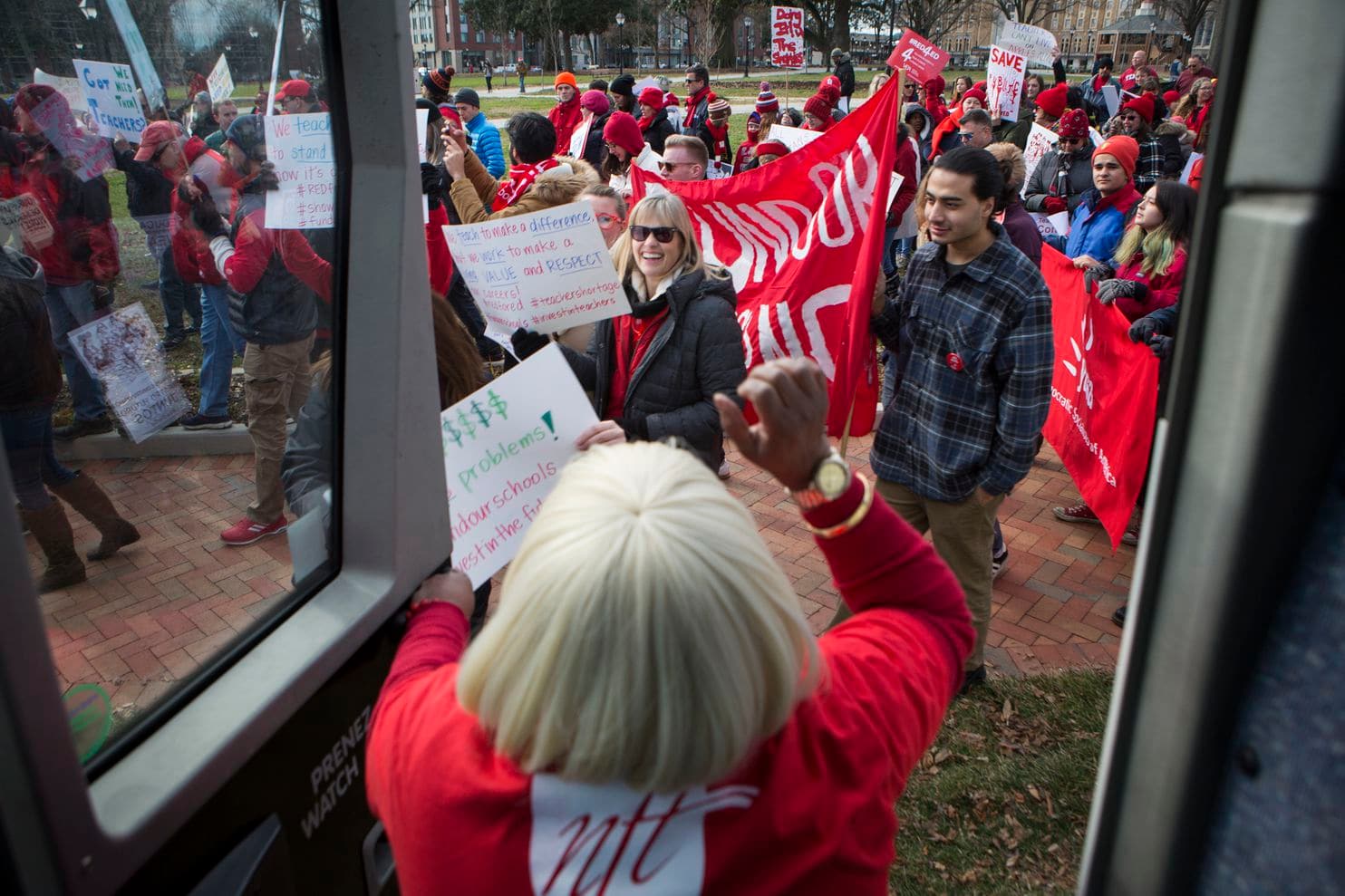Dean Daire quoted in Washington Post article
Amid teacher shortages, Virginia takes steps to lure students into the profession
By Debbie Truong, The Washington Post
July 20, 2019

They have sought help from employment agencies. They have fanned up and down the East Coast. And when they weren’t able to find teachers before the start of the school year, officials in Petersburg City Public Schools in Virginia had students live-stream classes.
Nearly 940 teaching positions went unfilled in Virginia at the beginning of the 2017-2018 school year, reflecting a teacher staffing crisis that has beset classrooms nationally. Few school systems in the state have been hit harder than Petersburg, where former governor Terry McAuliffe (D) once pleaded for retired teachers to return to the classroom.
[Wanted: Retired teachers to help troubled Va. school district]
Public colleges and universities in Virginia hope they can help curtail teacher shortages by offering undergraduate teaching majors. Last month, the Virginia Department of Education approved undergraduate teacher education programs at more than a dozen colleges and universities. Educators said the goal is to streamline requirements and lower the cost of entering the profession.
It was welcomed news in Petersburg, a 4,200-student school system about 25 miles south of downtown Richmond.
Because of the teacher shortage, Petersburg has resorted to long-term substitutes and teachers who are provisionally licensed, meaning they haven’t fully completed teacher preparation programs, said Lyle Evans, executive director of human resources, finance and operations for the school system.
“Some of these people haven’t been in a classroom since they were students themselves,” Evans said.
Before last month, most public colleges and universities in Virginia required teaching candidates to first complete a bachelor’s degree in a subject area such as math, science or social studies. Aspiring educators would then enter a teacher preparation program, which often required a fifth year of school.
McAuliffe took emergency action in December 2017 to change that, issuing an executive directive to get aspiring teachers into classrooms faster and paving the way for colleges and universities to create undergraduate teaching majors.
"At VCU, we recognize that we have to do more in how we prepare our educators, particularly in our hardest-to-staff schools."
Andrew P. Daire, dean of the School of Education at Virginia Commonwealth University, said allowing students to study teaching in their undergraduate years will expose them to classroom teaching experiences sooner.
Fewer graduates are entering the profession while school systems, especially those in high-poverty neighborhoods, are hemorrhaging educators, Daire said. Teacher education programs, he added, must assess how effectively they are preparing teachers to work with students from marginalized communities, including those who may face stress borne from poverty.
“At VCU, we recognize that we have to do more in how we prepare our educators, particularly in our hardest-to-staff schools,” he said.
At the University of Virginia, Stephanie D. van Hover, a department chair in the Curry School of Education, said shortening the time it takes for aspiring educators to get into the classroom will make choosing teaching as a career a less cost-prohibitive proposition.
In recent years, the university in Charlottesville has shortened its master’s degree program from two years to 11 months, so students graduate “faster with less debt.”
“Cost is a huge issue, because you’re entering a profession that isn’t as well paid as others,” van Hover said. Each semester, students pursuing degrees in education will be placed in classrooms alongside a mentor, she said.
The number of unfilled teaching positions in the state nearly doubled between the 2013-2014 and 2017-2018 school years, according to data from the Virginia Department of Education. The need for teachers is particularly acute in special education and in elementary and middle schools.
Shortages have touched schools across the state, including Fairfax County Public Schools, a high-performing school system that is Virginia’s largest. Two or three years ago, the school system had 200 vacancies at the start of the school year. Last school year, the district had about 90 unfilled openings.
Fairfax has started recruiting teachers earlier in the year and, to diversify the candidate pool, has extended efforts to historically black colleges and universities, Puerto Rico and states with higher populations of Hispanic residents.
The 188,000-student school system has issued teaching offers to graduating high school students who participate in the Virginia Teachers for Tomorrow Program, which aims to attract students to the field of education and help bolster the state’s supply of teachers.
The high school students are invited to return to Fairfax as teachers once they have graduated college and become licensed, said Fairfax Superintendent Scott Brabrand. About 20 high school students received contracts at the end of the recently concluded academic year, but Brabrand said the school system is looking to issue contracts to more high school seniors in the future.
“We have got to resell the next generation of American youth on the power of being a teacher, the value, the prestige and the importance of being a teacher,” he said.